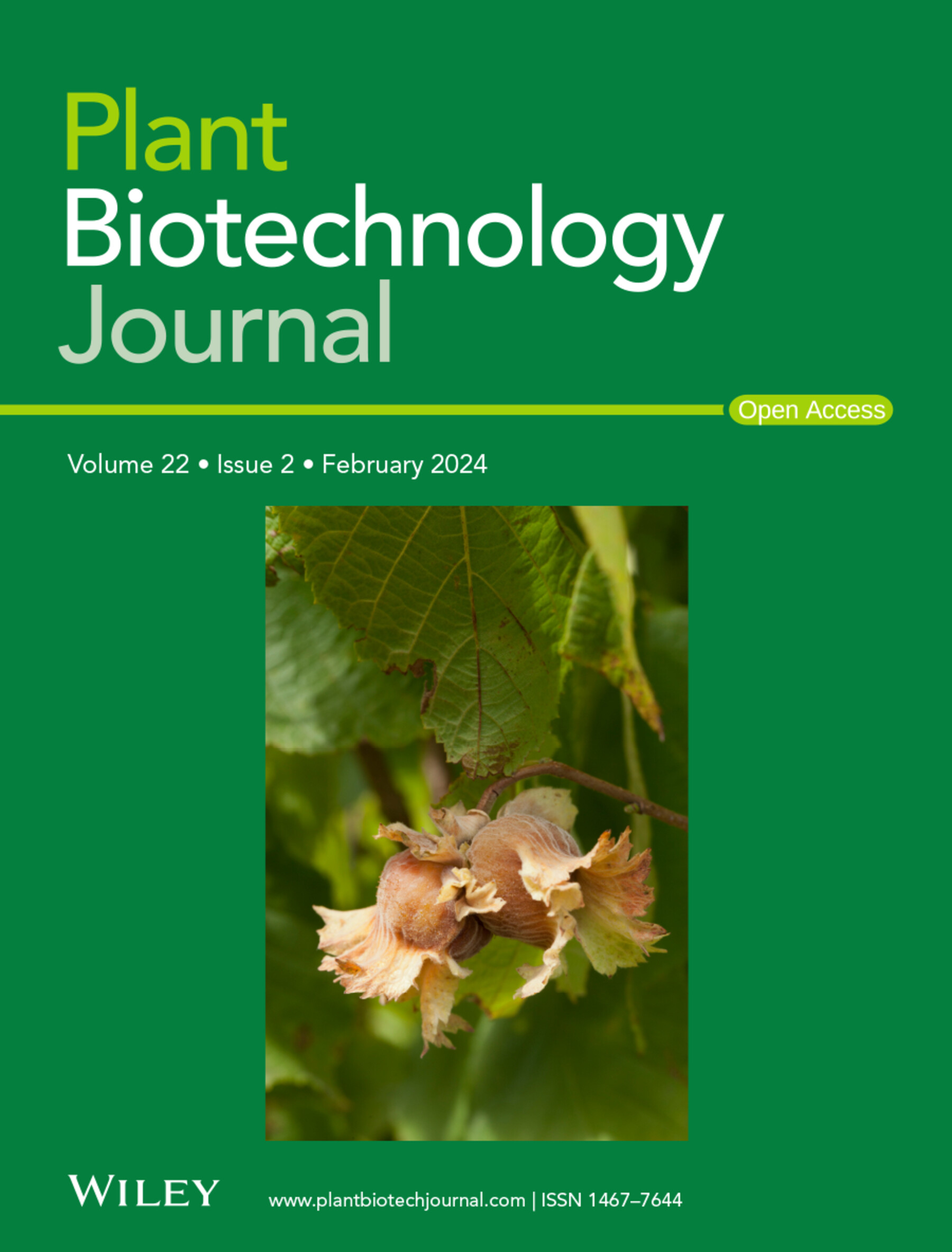Identification of PpTHE1, a cell wall integrity sensor regulating the increased duration of harvest window in slow‐melting flesh peach, through the assembly of a chromosome‐level reference genome of Prunus persica
IF 10.1
1区 生物学
Q1 BIOTECHNOLOGY & APPLIED MICROBIOLOGY
引用次数: 0
Abstract
SummarySlow‐melting flesh (SMF) in peaches offers many advantages, including easy transportation, maintaining flavour after ripening, an extended harvest window, and reduced losses caused by fruit softening. However, the underlying molecular mechanism remains elusive. A high‐quality genome of the SMF cultivar Chunrui was sequenced, assembled and annotated. The assembled genome was 249.6 Mb in size and characterized by a contig N50 of 12.35 Mb and a scaffold N50 of 30.27 Mb. Analysis of a segregating population indicated that a single dominant gene or major gene controlled the SMF trait. This trait was mapped to chromosome 4, which had a total length of 1.39 Mb. Fine mapping and gene expression analyses identified the receptor protein kinase通过对桃李染色体水平参考基因组的组装,鉴定了调节慢融果肉桃收获窗口延长时间的细胞壁完整性传感器PpTHE1
桃子的慢融果肉(SMF)具有许多优点,包括易于运输,成熟后保持风味,延长收获窗口,减少果实软化造成的损失。然而,潜在的分子机制仍然难以捉摸。对SMF品种春瑞的高质量基因组进行了测序、组装和注释。组装的基因组大小为249.6 Mb,序列N50为12.35 Mb,支架N50为30.27 Mb。分离群体分析表明,SMF性状由单个显性基因或主基因控制。该性状被定位到全长1.39 Mb的第4染色体上。精细定位和基因表达分析发现,受体蛋白激酶THESEUS 1 (PpTHE1)是SMF的候选基因。插入PpTHE1下游的Gypsy LTR‐反转录转座子抑制其表达。桃子和番茄果实的功能分析表明,PpTHE1在保持果实硬度方面发挥了积极作用。以PpTHE1激酶结构域为诱饵筛选酵母文库,鉴定出ERF型转录因子PpERF61和果胶裂解酶PpPL15。荧光素酶互补成像、双分子荧光互补和共免疫沉淀实验表明,PpTHE1在植物中可以与ppperf61和PpPL15相互作用。此外,我们的实验数据显示,PpTHE1显著削弱了PpERF61与其靶基因的DNA结合能力。这些发现揭示了SMF果实品质性状的调控机制,从而为培育高品质、耐贮藏的桃基因型提供了理论支持。
本文章由计算机程序翻译,如有差异,请以英文原文为准。
求助全文
约1分钟内获得全文
求助全文
来源期刊

Plant Biotechnology Journal
生物-生物工程与应用微生物
CiteScore
20.50
自引率
2.90%
发文量
201
审稿时长
1 months
期刊介绍:
Plant Biotechnology Journal aspires to publish original research and insightful reviews of high impact, authored by prominent researchers in applied plant science. The journal places a special emphasis on molecular plant sciences and their practical applications through plant biotechnology. Our goal is to establish a platform for showcasing significant advances in the field, encompassing curiosity-driven studies with potential applications, strategic research in plant biotechnology, scientific analysis of crucial issues for the beneficial utilization of plant sciences, and assessments of the performance of plant biotechnology products in practical applications.
 求助内容:
求助内容: 应助结果提醒方式:
应助结果提醒方式:


